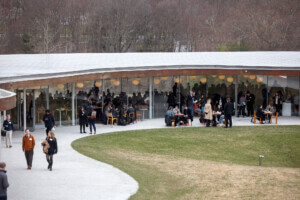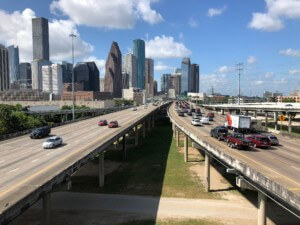About two years ago, a spokesperson for the Texas Department of Transportation (TxDOT) was making the rounds of El Paso civic groups with a presentation touting the benefits of widening Interstate 10 through downtown, and adding frontage roads alongside a four-mile stretch of highway. TxDOT, driven in part by an anticipated increase in truck freight, is focused on widening freeways in core urban areas.
Part of the pitch was the typical traffic modeling that pushes most of these capacity-building exercises. The other, more novel part promised to deliver the city an urban amenity growing in popularity around the country—a cap creating verdant public space over the highway. This El Paso iteration would overlie the Trench, a 6-block-long depressed portion of I-10 edging the downtown core. Immediately north of the Trench are mostly commercial buildings.
The pitch continued: the El Paso deck park would be modeled after Dallas’s 5.2-acre Klyde Warren Park, which has spurred development in its immediate vicinity. It turned out that the Greater El Paso Chamber of Commerce, which created a group to promote transportation projects, had coordinated a visit to Klyde Warren for select elected officials and business leaders. This was done in some capacity with TxDOT, whose representative had shopped the concept around town.
The problem with all this—even now, two years on—was that the scheme hinged on widening the freeway and creating new frontage roads, which would take away the strip of mostly commercial properties just north of downtown, as well as properties adjacent to the freeway east of downtown. Those properties include two apartment buildings, one of them historic.
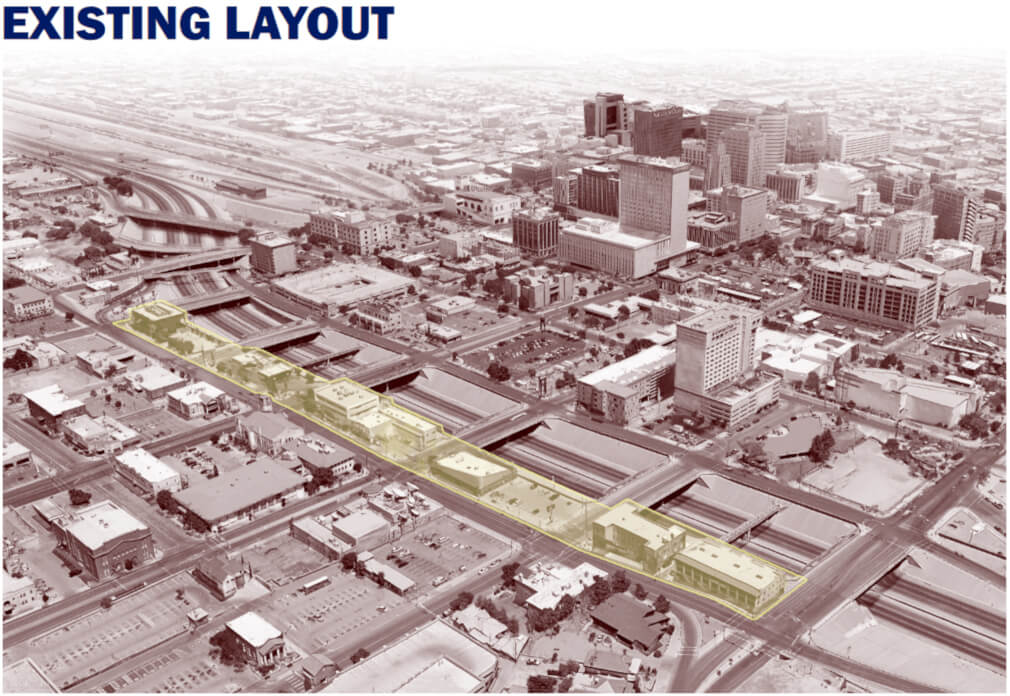
In addition to erasing property, the highway project would eliminate at least three existing crossings that are used by cars, bikes, and pedestrians and that help maintain a classic grid system that spreads out traffic. The deck park would not restore those connections. Finally, while there are intact neighborhoods to the northeast and northwest of downtown, what is directly north of downtown is mostly vacant lots and commercial buildings.
Troublingly, the language being used by deck park supporters is that of “equity,” “environmental justice,” and “connectivity.” The first two are flatly incorrect. This is an economic development project promoted by downtown developers. It may indeed be an amenity, perhaps one capable of attracting new private investments, as happened in Dallas, but it fails to live up to its stated aims.
In fact, if you look up Klyde Warren Park, you won’t find articles on equity, the environment, or connectivity. You will find articles with titles like “How Klyde Warren Park Has Changed Dallas Real Estate” (D Magazine, September 2015).
It undermines the very concepts of equity and connectivity when those terms are co-opted for economic development projects, and it undermines the purpose of federal funding when programs aimed at correcting years of highway destruction are instead used to cover up or deflect attention from further destruction.
Change at the top
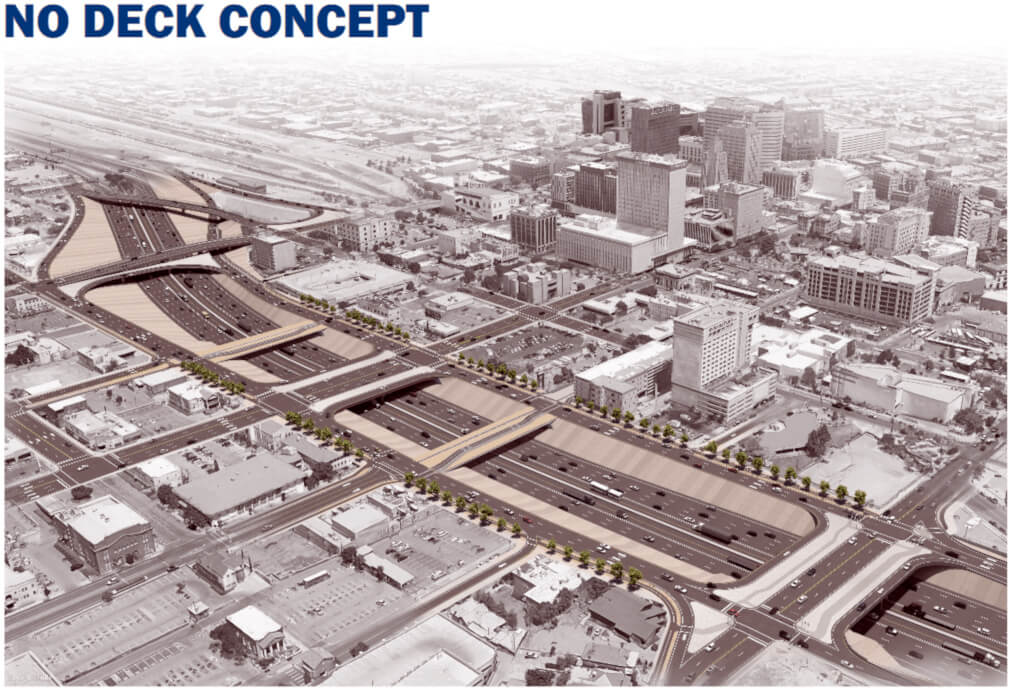
“Now is the time to finally address major inequities—including those caused by highways that were built through Black and Brown communities, decades of disinvestment that left small towns and rural main streets stranded, and the disproportionate pollution burden from trucks, ports, and other facilities,” Secretary of Transportation Pete Buttigieg, testifying before the House Transportation Committee on March 25, said. The national conversation on this topic has been growing for decades, but the secretary’s words were stronger stuff from the top than advocates are used to.
The scenario he described is exactly what happened in El Paso, which once had one of the best city cores in the Southwest, if not the nation. As set down by the 1925 City Plan, a well-designed grid, crisscrossed by streetcars, produced a beautiful city of neighborhoods. The urban fabric was the very definition of what cities now seek to reproduce, with neighborhood-scale retail, parks, and schools all in walking distance, and with clusters for larger retail, with downtown being the centerpiece.
Nevertheless, El Paso political leaders and developers squandered this strong urban legacy and elected to follow the example of Southern California postwar sprawl. And when the freeway came calling, it’s not surprising where it went and what it took with it.
One of the victims was Lincoln Park, home to a Black and Brown community in northeast El Paso. The freeway devastated the community and created a dividing line between north and south, in the form of I-10, that remains to this day. Further, there is the Chamizal port of entry just to the south of Lincoln Park, creating a tangle of overpasses, ramps, and roadways, interspersed with industrial and warehouse facilities woven throughout the community.
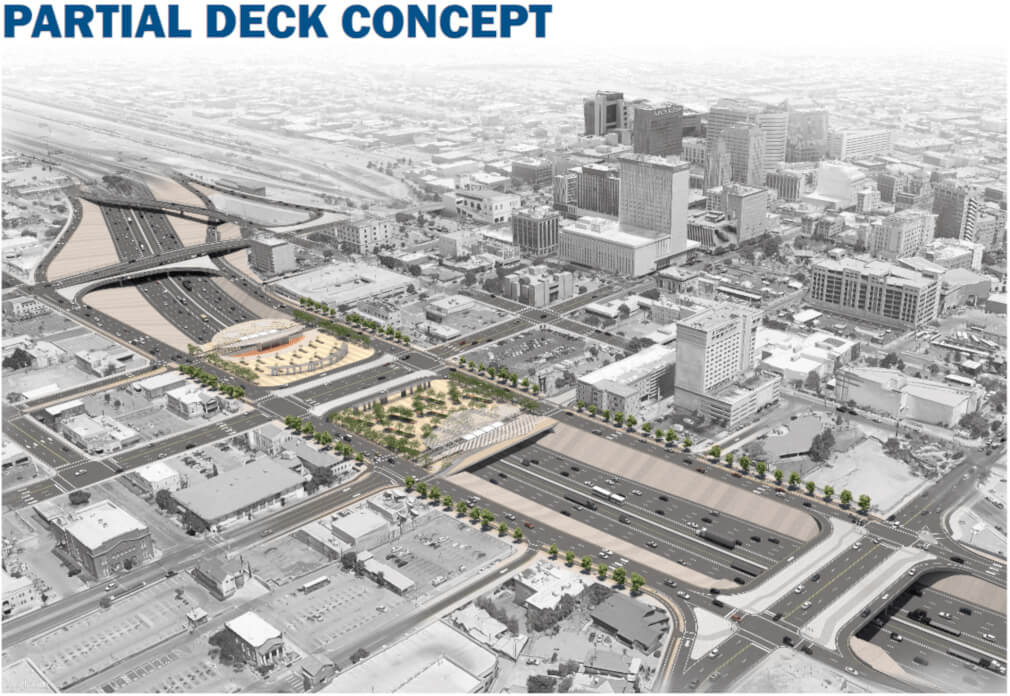
The El Paso example
El Paso is a port city, where trucking and transportation logistics are big business, but it is also a green valley in the desert. It is increasingly gray, encased in concrete, with temperatures rising. There has been very little thought given by the political leaders and developers who control the built environment about the equity of driving national and international trade through the heart of the city and low-income and minority neighborhoods.
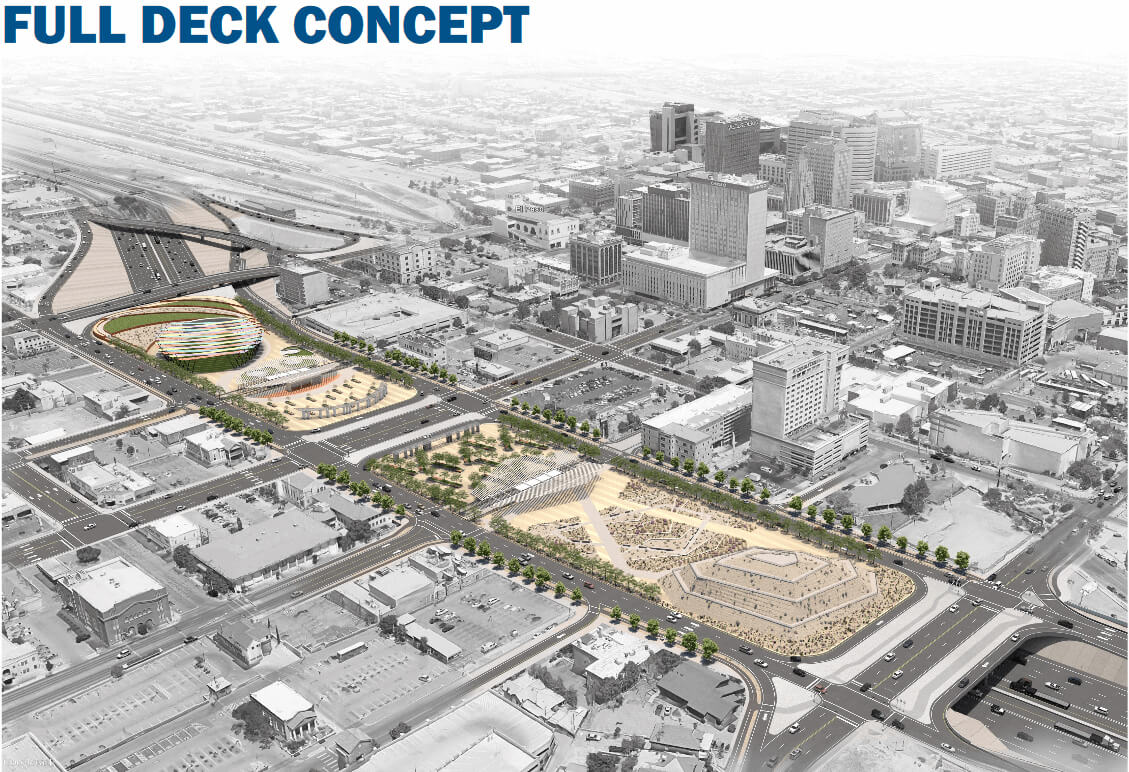
TxDOT proposes to make the situation worse, and the city and downtown developers are not pushing back. Instead, they are prepared to support the highway widening and frontage roads to gain a sought-after downtown amenity. It may be a very nice amenity and should stand or fall on that merit, but when it comes to equity and mitigation, urban improvements should be made east of downtown instead, in Lincoln Park, Five Points West, and the Chamizal, among other locations, and west of downtown in the Sunset Heights and San Francisco Districts.
Deck park concepts are increasingly in vogue, and in many cases, maybe even most, they can aid equity or connectivity. But that’s not the case in El Paso, where the language of justice is being used to cover up, or justify, a bad proposal.
That is something that should concern policymakers, if they really mean what they say.
Sito Negron has been a reporter, editor, and writer, covering politics, policy, and culture. He currently serves as a communications director and policy aide for elected officials at the state and local level. He lives in Sunset Heights, El Paso, and is president of the Sunset Heights Neighborhood Improvement Association.








